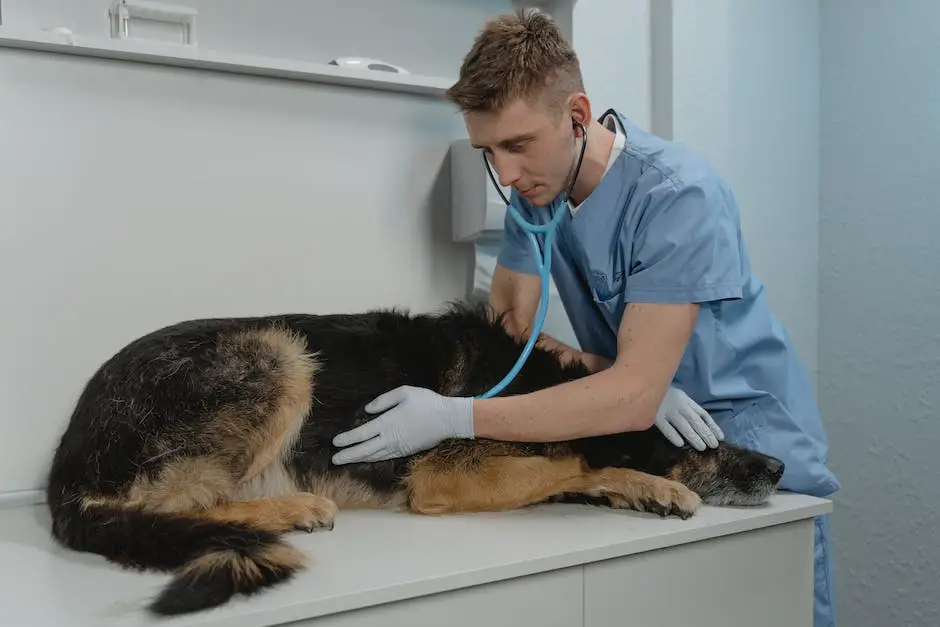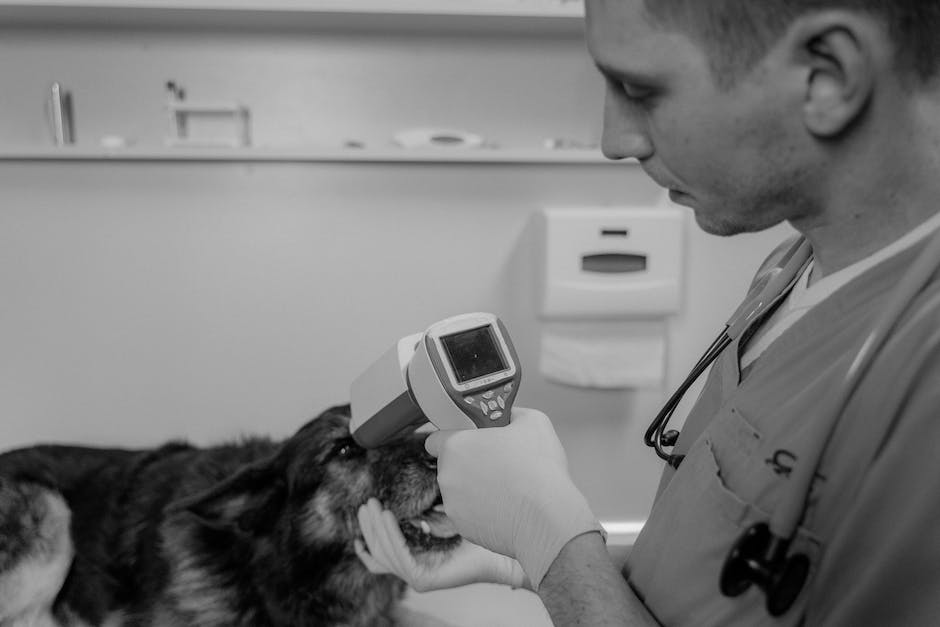Understanding Canine Bradycardia: Key Insights on Diagnosis and Treatment
Understanding how the heart functions in our beloved, canine friends is vital to ensure their well-being and longevity. With heart rate serving as a primary marker of a dog's overall health, extreme deviations such as a consistently low heart rate can be a cause for concern. Exploring the physiological foundations that underpin this condition, alongside recognizing the signs, knowing the appropriate diagnostic methods, and understanding the various treatment options, equips dog owners and veterinarians alike with vital knowledge. This article delves deep into this subject, looking at the physiological causes that can lead to a low heart rate, how one can detect and diagnose this condition, and the various ways it can be treated and managed.

Physiological Causes of Low Heart Rate in Dogs
The Underlying Physiological Causes of Low Heart Rate in Dogs
Canines, like humans, experience fluctuations in heart rate based on several factors including age, size, overall health, and physical activity. Generally, a healthy adult dog's heart rate ranges from 60 to 160 beats per minute (BPM). However, larger canine breeds tend to have slower heart rates, while small or young pups may often have heartbeats quick as a hare.
In this discussion, our focus lies on the physiological cause for low heart rate, or bradycardia, in dogs. Bradycardia can point towards underlying health issues that necessitate immediate attention.
-
Hypothermia:
Exposure to cold weather can cause a dog's heart rate to decrease. In frigid temperatures, the body works to conserve heat, which can cause a reduction in peripheral blood flow and result in a lower heartbeat.
-
Sedatives and Anesthetics:
These substances can drastically slow down a dog's heart rate. Often used during surgical procedures, sedatives and anesthetics may cause the heart to pump blood at a slower speed. Similarly, certain classes of medication, like beta-blockers, can induce bradycardia.
-
Hypothyroidism:
The thyroid plays a significant role in regulating a dog's metabolism. A malfunctioning thyroid, prone to underproduction of hormones (a condition known as hypothyroidism), can lead to a host of problems, including bradycardia.
-
Age and Intrinsic cardiac conditions:
Aging dogs often experience a decrease in heart rate. This is due to the natural degenerative changes that occur in the heart and vascular system. Conditions like heart block, where electrical signals are disrupted within the heart, can also cause a reduced heart rate.
-
Neurologic disease:
Certain neurological conditions, such as increased intracranial pressure or severe brain injury, can result in low heart rates due to disruption of the body's autonomic regulation system.
-
Electrolyte Imbalances:
Essential minerals like potassium are involved in maintaining a dog's heart functions. Increased levels of potassium in the bloodstream, known as hyperkalemia, have been linked to decreased heart rates in dogs.
It is critical to note that low heart rates are not exclusively indicative of severe health issues. Athletic dogs, for example, often have resting heart rates lower than their less active counterparts due to increased cardiovascular efficiency. However, persistent or sudden onset bradycardia should be assessed by a veterinarian. Recognizing these physiological causes aids in a prompt diagnosis and effective treatment plan for our canine companions. While the dog's heart rate is a small piece of the animal's health puzzle, it is one that offers valuable insights into their overall wellbeing.

Detection and Diagnostic Methods for Low Heart Rate in Dogs
The Rigorous Journey to Diagnose a Low Heart Rate in Dogs: An Overview of Standard Procedures and their Reliability
Investigating the heart rate in dogs forms an indispensable part of a veterinarian’s routine check-ups. Among the primary concerns that can arise from this healthcare procedure is the detection of a low heart rate, or what is scientifically termed as 'bradycardia'. This discovery triggers a series of diagnostic evaluations to uncover the underlying causes. While previously discussed factors such as hypothermia, effects of sedatives and anesthetics, hypothyroidism, inherent cardiac conditions, neurologic disease, and electrolyte imbalances undoubtedly play significant roles, the scope of this article aims to provide a new perspective on the standard diagnostic procedures, shedding light on how they aid in detecting bradycardia and gauging their reliability.
Initially, a thorough physical examination carries immense weight. During this phase, veterinarians listen for heart sounds, evaluate capillary refill time, and examine mucous membranes. Veterinarians also look for clinical signs, such as lethargy, weakness, and collapse, which might be indicative of a low heart rate.
Feasibly, the cornerstone of detecting bradycardia lies in the accurate assessment of a dog's heartbeat. The tool of choice for this venture is a stethoscope—an invention revered in both human and veterinary medicine since its inception in 1816. A veterinarian carefully listens to the heartbeat to identify any deviation from the norm, typically 60 to 160 beats per minute in resting adult dogs. While the stethoscope offers a preliminary investigation, it falls short in isolating specific heart problems or arrhythmia types.
To delve deeper into the realm of a dog's heartbeat, veterinarians embrace electrocardiography (ECG). Through a graphic tracing of the electrical activity of the heart, practitioners can visualize subtle abnormalities in rhythm and electrical conduction, thus enhancing the diagnosis process's objectivity. Despite occasionally getting false-positive or false-negative readings, ECG has cemented its role as a key player in detecting cardiac arrhythmias.
Echocardiography—the utilization of sound waves to create moving images of the heart—acts as a supplement to ECG by providing a comprehensive anatomical examination. This non-invasive method can reveal structural abnormalities commonly associated with bradycardia, such as enlarged chambers, thickening or thinning of the walls, and irregular heartbeats. However, the interpretation of results requires advanced knowledge and inherent limitations of equipment, such as shadowing and image quality, may preclude definitive diagnosis.
Blood tests serve an equally evaluative function. By examining biological markers and electrolyte levels, veterinarians determine if an endocrine disorder or electrolyte imbalance contributes to a low heart rate. While these tests provide rich data, the possibility remains that some factors which induce bradycardia might not directly influence these parameters.
In conclusion, the medical fraternity's relentless pursuit of knowledge coupled with cutting-edge technology has brought forth an array of diagnostic procedures. Each bearing their strengths and weaknesses, these procedures collectively shape the course of bradycardia detection and treatment in dogs. Their reliability, while not impeccable, undoubtedly provides a sturdy foundation for clinical decision-making and paves the way for ongoing advancements in canine healthcare.

Treatment and Management Strategies for Low Heart Rate in Dogs
In the quest for optimal health in our canine companions, few aspects grab as much attention as the heart rate. As part of any vet check-up, a thorough investigation of a dog's heart rate is crucial. One of the conditions that warrant close attention is bradycardia, defined by a slower than normal heart rate.
For a general understanding of the condition, a physical examination serves as a principal diagnostic tool. Traditional and straightforward, the use of a stethoscope to listen for heart sounds provides an initial peek into the heart's health. However, while the stethoscope is an invaluable asset in the diagnosis arsenal, it does have its limitations. It may not be adequate to diagnose specific heart problems or arrhythmias accurately. Its utility in discerning the nuanced beats of the heart that may hint at bradycardia is limited.
To counter these limitations, the next step in diagnosis often involves electrocardiography (ECG). An ECG allows for the detection and visualization of abnormalities in heart rhythm and electrical conduction. It offers a more in-depth insight into the working of a dog's heart. Yet, just like the stethoscope, it is not entirely flawless. It can sometimes provide false readings, which can confuse the diagnosis process.
In order to plug the gaps left by the ECG, echocardiography is often wielded as a valuable supplementary tool. It facilitates an anatomical examination of the heart and detects structural abnormalities associated with bradycardia. Again, the utility of echocardiography is moderated by limitations in interpretation and equipment constraints.
Further supplementing the diagnostic toolbox are blood tests, which examine biological markers and electrolyte levels to ascertain underlying causes of bradycardia. As a general rule, blood tests offer an effective way of diagnosing the potential causes of bradycardia. Still, there are strengths and weaknesses, offering a nuanced view of the canine organ’s health - while excellent in some areas, they may not be entirely comprehensive or foolproof.
In this vein of thought, it is evident that while each of the diagnostic procedures described comes with its host of advantages, they also have intrinsic limitations. This necessitates a systematic and organized approach in deploying these tools, ensuring the most effective diagnosis. What is clear, however, is the unassailable importance these procedures bear in detecting and treating bradycardia in dogs, ensuring a healthy life ahead for our four-legged friends.
As we look towards the future, the role of technological advancements in canine healthcare is unmistakable. Constant development in medical technologies and procedures promises refined diagnostic processes, more effective treatments, and an overall heightened understanding of canine health. The dream of every pet owner, veterinarian, and indeed, every dog lover, is for this growth to continue unabated, and for every day to bring us closer to entirely eradicating diseases and conditions such as bradycardia. But, until then, we soldier on, making the best of the tools and knowledge at our disposal.

Ultimately, the love humans have for their canine companions demands that we arm ourselves with comprehensive knowledge about their common health issues, like low heart rates. Enhancing our understanding of the physiological underpinnings, diagnostic methods and treatment options for this condition empowers us to ensure that our faithful friends lead happy, healthy lives. The prognosis for dogs with low heart rate greatly improves with early detection and intervention, emphasizing the importance of regular check-ups and immediate veterinary consultation when health anomalies are observed. Regardless of the condition, an integrated, individualized approach to treatment and management, underpinned by a deep understanding of the condition, will prove most effective.





Comments